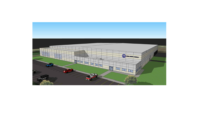Innovation in technology key to U.S. manufacturing growth
The 2016 Industrial Manufacturing Trends Report, published by PwC (strategyand.pwc.com), asserts that investments in technology are “essential” for the growth of the U.S. manufacturing sector. According to the report, making strategic investments is one key to growth, particularly in fast-evolving industries.
Innovation is building a “data-driven factory of the future with robotics, augmented reality, 3D printing, Internet of Things and other technologies, creating an environment of higher productivity and reduced costs,” the report said.
The report added that many of the technological innovations used in manufacturing today will be commonplace within the next 5 to 10 years, meaning that manufacturing executives “must lead with an eye toward that reality, and not merely the current bottom line.”
According to Nitin Rakesh, CEO and president of leading digital modernization firm Syntel, the digital age has disrupted many different aspects of manufacturing.
“From research and development to marketing and sales, businesses cannot afford to put production on hold in order to modernize, but must transform their manufacturing processes in order to thrive in an increasingly competitive environment,” said Rakesh. “Financial pressures in the manufacturing sector are prompting organizations to re-assess how they use technology in their manufacturing operations, to determine how they can best modernize their systems in order to maintain a competitive edge.”
“Cost-conscious businesses need to realize that their long-term run-the-business costs will be higher without a proper technology infrastructure in place,” says Rakesh.
He highlighted modernizing and automating back-end support systems as a key driver that can enable manufacturers to cut costs and improve efficiency.
“The digital revolution has reached the factory floor,” Rakesh says. “Investments in IoT-enabled machinery and connected devices now enable manufacturers to harness data from these assets to optimize factory operations.”
“The insights available allow organizations to monitor the input, boost their output and maintain a high level of quality control. Through integrated sensors and automation technology, organizations are positioned to make more effective decisions in other areas such as finance, product design and distribution.”
Looking for a reprint of this article?
From high-res PDFs to custom plaques, order your copy today!




